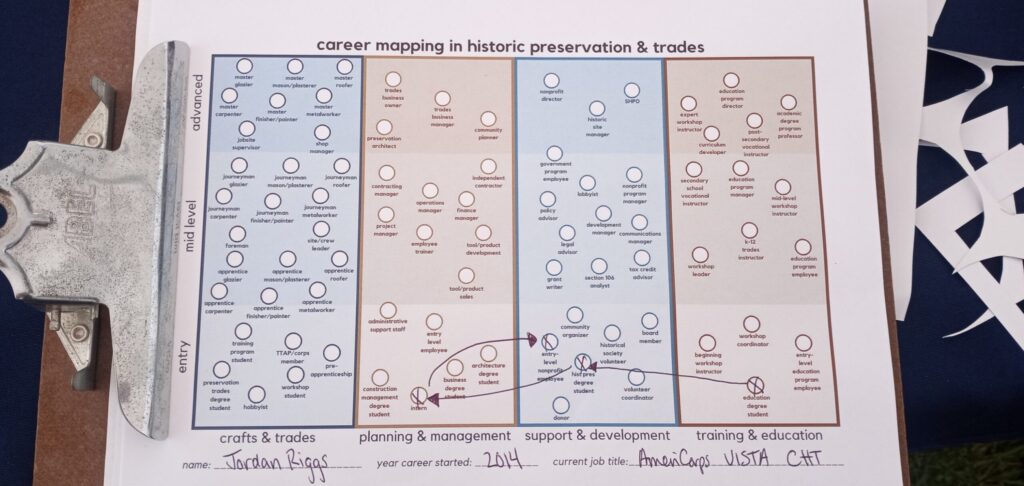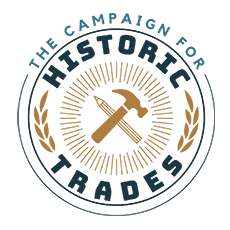Hello everyone! My name is Jordan Riggs, and for the last 10 months, I have been a part of Preservation Maryland’s program The Campaign for Historic Trades as an AmeriCorp VISTA. While I have had many different projects since I joined the team, I wanted to take this opportunity to reintroduce myself and to talk about an exciting opportunity I had in May to attend the International Preservation Trades Workshop (IPTW) put on by the Preservation Trades Network (PTN) and hosted at Belmont College in St. Clairsville, Ohio. I wanted to share a glimpse into my experience at the workshop and some of the hands-on activities.
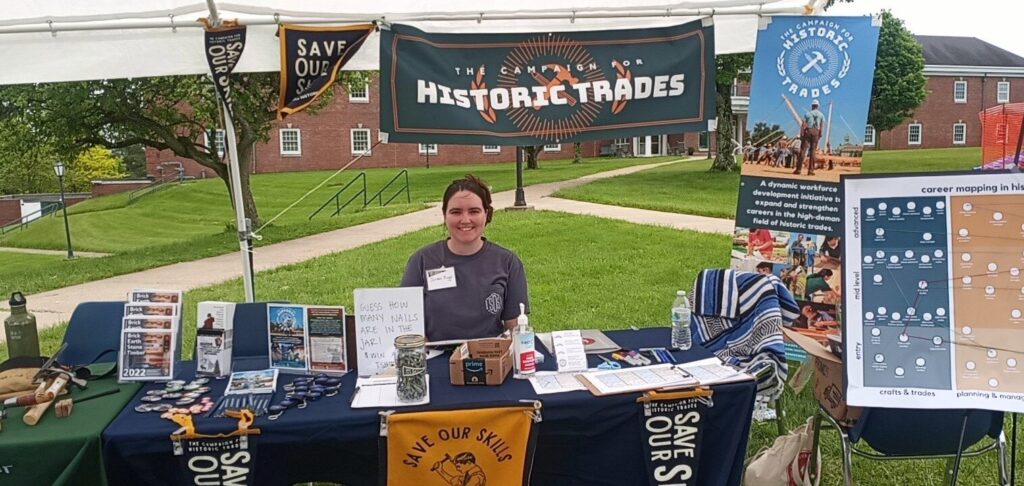
Day 1:
I started out my first day at IPTW by attending a workshop called “Timber Talk” with Windy McGlinsky of New Netherland Timber framing and Preservation. I learned the difference between sills (which are horizontal) and posts (which are vertical), as well as terms such as gables, eaves, and girts. Windy spoke of her experience repairing and preserving old barn structures, such as what happens when the walls of the barn start to separate and how cables can be used within the structure to keep it stable.
The next session I attended was “Twisted Forge,” with Ohio Blacksmith, Andrew Bealer. During the session, we learned about the importance of blacksmithing in early America. Andrew demonstrated various processes of tool making, like showing the full process of making an auger Suffolk Style Latch.

Day 2:
Day 2 began with a presentation on the work happening at President Lincoln’s Cottage, a historic site and museum in Washington D.C. Larry Jeff, the Lead Historic Preservationist with the museum spoke about the planning and implementation of the Cottage vestibule restoration project. Jeff Johnson of Johnson & Griffith Studio in Vermont went on to show some of the restoration techniques used at Lincoln’s Cottage during this project, like how he painted faux wood grain using pigments, brushes, and dragging techniques to make each piece of “wood” look unique. His not-so-secret ingredient? Guiness beer! Preservationists and tradespeople in the room were shocked to watch him pour a glass of Guiness out and dip his brush in the puddle of flat beer. Sure enough and true to his word, he had the perfect coloring of a dark wood and a unique grain due to his various brushing methods.
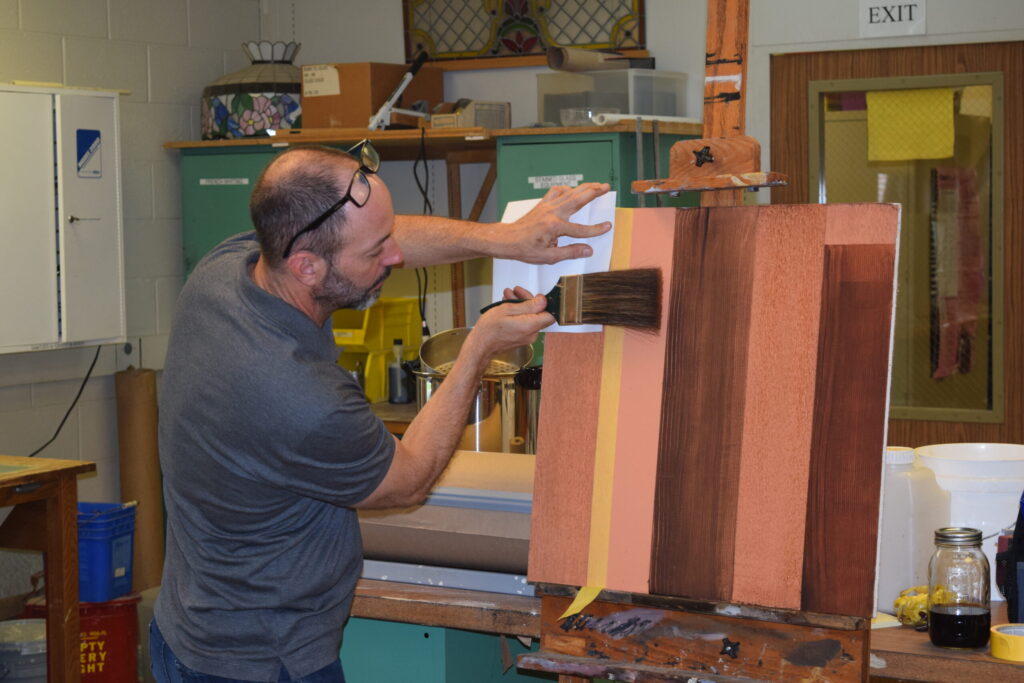
The second workshop I attended was “Scagliola Magic” with David Hayles (New York and UK). Scagliola a technique that combines various materials and pigments which are added to plaster in order to mimic specific types of natural stone, such as marble. Hayles discussed and demonstrated American scagliola, also known as merezzo scagliola. I watched as he made a gradient of blues using the plaster and pigments, stacked them together, and then applied them to his demonstration block’s leaf carvings. Once it cured after a couple of days, he scraped off the excess to reveal the blue-green color gradient in the leaves. Hayles spoke of his experiences, including working on the US Capitol Building in D.C. and Buckingham Palace in London.
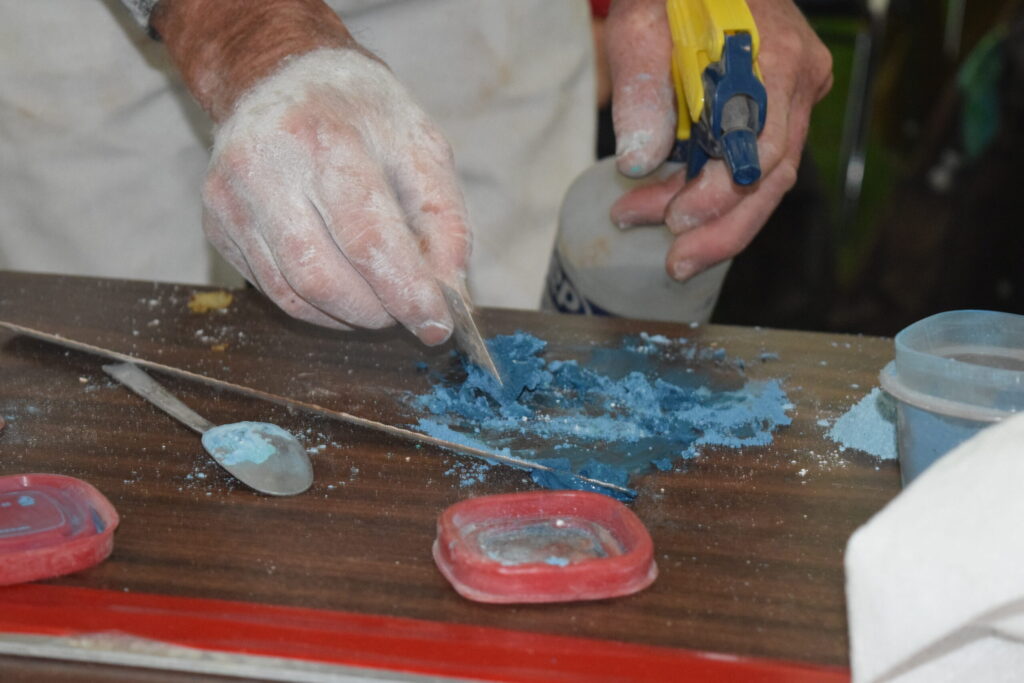
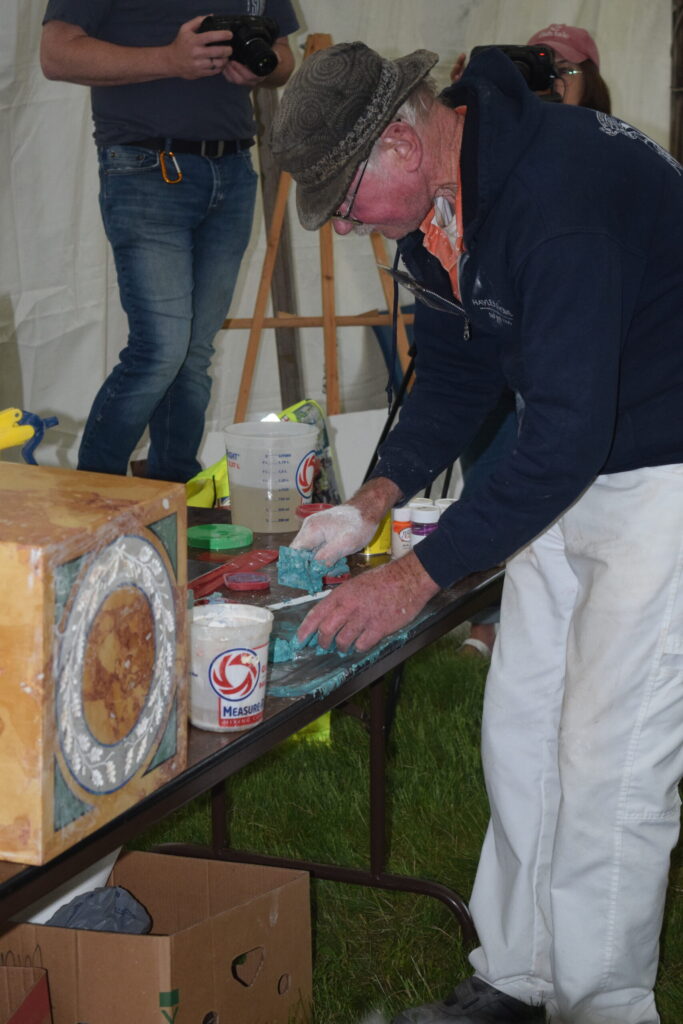


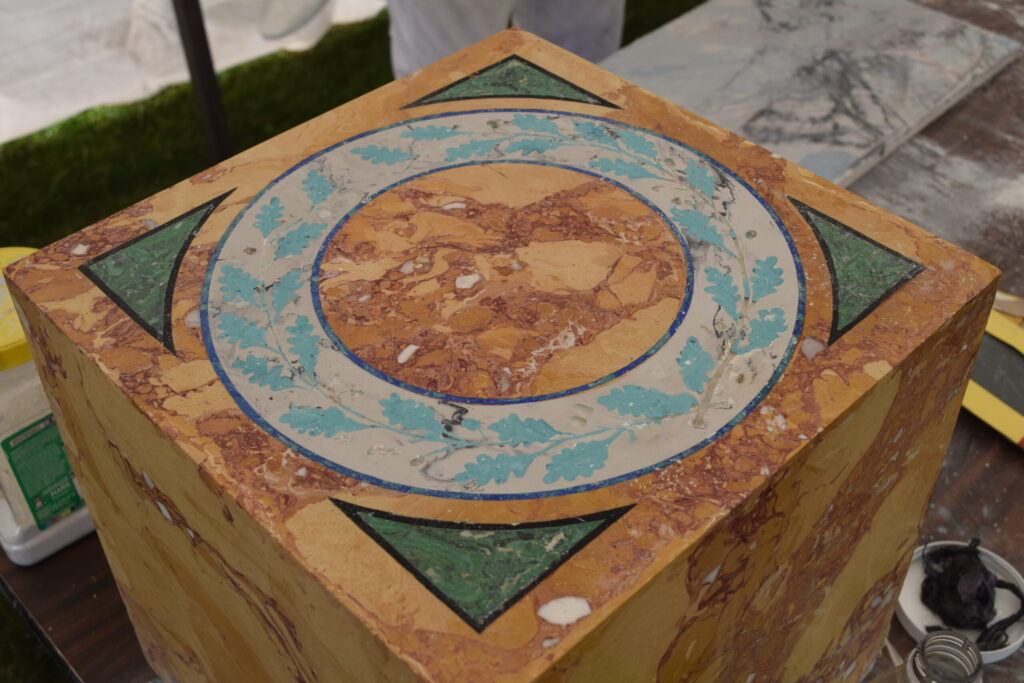
Day 3:
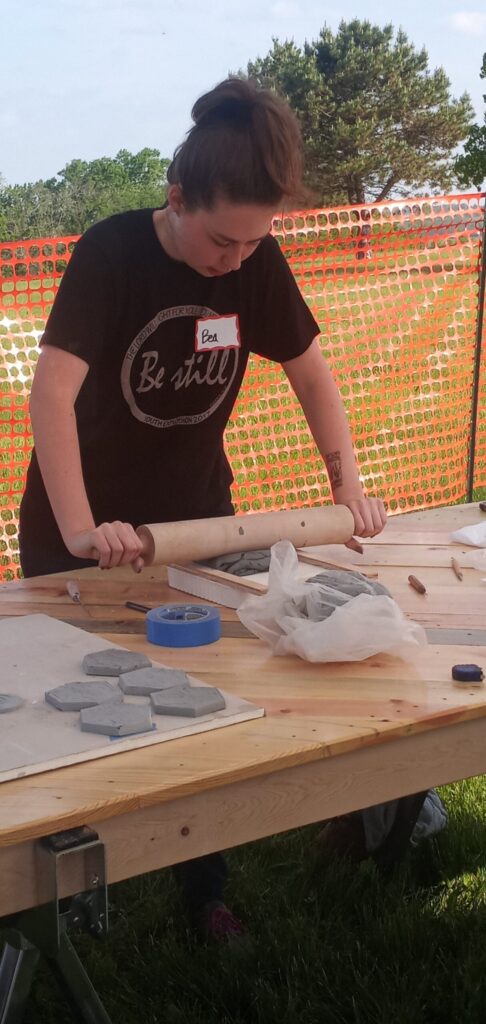
On the final day, I attended a decorative tile session led by Belmont student Bea Lendon. She explained the process of making ceramic tile by making plaster blanks, scribing the design, and rolling and cutting the tile. As she cleaned and glazed her design, Bea talked us through the kiln-firing process. It was interesting to see experienced tradespeople from various backgrounds, like window glazing and timber framing, so engrossed in the ceramics. It showed me how diverse the historic preservation field is and how even experienced tradespeople continue to learn new things every day.
As this was the final day of the workshop, the afternoon was opened to the public. Many people came out from St. Clairsville, OH and near-by Wheeling, WV to see the demonstrations and take part in the action. The blacksmith’s station had quite the crowd of interested future tradespeople! In addition to attending different workshop sessions, I was able to network with tradespeople from across the globe.

Several members of the National Park Service’s Traditional Trades Advancement Program (TTAP) also attended and had the opportunity to get hands-on experience too. They were just starting their seasonal service term. It was great to meet TTAP members in person, as one of my VISTA responsibilities includes talking to schools and individuals about opportunities with TTAP. It’s nice to experience items from your weekly task list manifest into actuality—and future tradespeople!
One of my favorite things to do at the conference was ask people to participate in our career mapping activity, developed by Preservation Maryland’s The Campaign for Historic Trades Team. What we thought would be a short activity quickly developed into one where people were really putting their heart into it. They began recalling stories from the beginning of their career and how their path was influenced by different events. For the young interns and TTAP members, it was such a cool way to hear different paths people took and how their choices shaped their paths. The activity started conversations about diversity in the historic preservation and trades fields, and where tradespeople hope to see the field go in the future.
